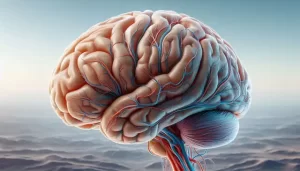Innate immunity and adaptive immunity in Repeated COVID-19 epidemics
- Rabies: The fatality rate nearly 100% once symptoms appear
- Human Brain Continues to Grow: Study Shows Increase in Size and Complexity
- CRISPR Genome Editing: From Molecular Principles to Therapeutic Applications
- Metformin Helps Immune System Better Recognize Cancer Cells
- Highlights of Prostate Cancer Research at the 2024 EAU Congress
- High Blood Sugar and Lipids Linked to Mental Health Risks
Innate immunity and adaptive immunity in Repeated COVID-19 epidemics
- Red Yeast Rice Scare Grips Japan: Over 114 Hospitalized and 5 Deaths
- Long COVID Brain Fog: Blood-Brain Barrier Damage and Persistent Inflammation
- FDA has mandated a top-level black box warning for all marketed CAR-T therapies
- Can people with high blood pressure eat peanuts?
- What is the difference between dopamine and dobutamine?
- How long can the patient live after heart stent surgery?
Innate immunity and adaptive immunity in Repeated COVID-19 epidemics.
The 2019 Coronavirus Disease (COVID-19) pandemic has affected hundreds of millions of people worldwide, with more than 4.5 million deaths. The most striking part of the disease outbreak is that most infected people show mild or no symptoms, while a few will develop severe or critical illness.
Scientists have explored the immune response to severe acute SARS-CoV-2 virus in several studies, trying to understand what causes the severity of the disease and what the risk factors are. Here is a brief summary of the innate and adaptive immune response.

Innate immunity to viruses
Cytokines are cell signaling molecules that mediate many biological and immunological effects. One of them is interleukin 6 (IL-6), which is a pleiotropic cytokine that mediates innate immunity and adaptive immunity. It helps guide the differentiation of immune cells and warns of invading pathogens and ischemic damage.
IL-6 also mediates the growth of plasma cells and the production of immunoglobulin antibodies. The high levels of IL-6 expression observed in autoimmune or autoinflammatory diseases also indicate its role in these diseases. Similarly, in COVID-19, IL-6 continues to be expressed at high levels after the virus enters the lung epithelium.
SARS-CoV-2 activates alveolar and circulating macrophages, leading to high IL-6 secretion and cytokine storm. This in turn leads to endothelial cell damage and dysfunction, high permeability capillaries, and exudate and cell blockage of the alveoli. This is the underlying mechanism of acute respiratory distress syndrome (ARDS). This suggests that tocilizumab (an IL-6 receptor inhibitor) can be used to modulate the severity of ARDS.
Complement activation
The multiple symptoms of severe COVID-19 pneumonia may be due to the activation of complement at the systemic level. They include ARDS and hypercoagulable state. The elevated IL-6 levels in these patients with pneumonia activate complement via the C5a-C5a receptor (C5aR) axis.
With the severity of symptoms, all inflammatory markers gradually increase, from asymptomatic to severe COVID-19. A variety of complement activation pathways may be involved, and the classic and alternative pathways are related to the strongest phenotype. These pathways are activated by IgG viral immune complexes.
Inhibition of the C5a/C5aR1 axis may prevent the release of inflammatory markers and lung damage, thereby bringing benefits to these patients. In addition, due to the strong activation of the complement system, patients with COVID-19 pneumonia often experience blood clotting. Therefore, this can also be prevented by blocking complement activation.
Another complement activation pathway may be the cause of ARDS in patients infected with the virus. Here, C1 esterase inhibitors (C1-INH) act in a variety of ways to regulate the intrinsic complement pathway. It COVID-19 useful in the treatment of pneumonia patients who suppress crosstalk between innate and coagulation pathway.
Adaptive immunity-antibody
This part of the immune response deals with the coordinated B and T cell response to the virus. Early antibody response includes IgM and IgA, and further secretion of IgG within 10 days. This immune response is believed to prevent viral infection and provide high-affinity IgG memory B cells.
Receptor binding domain (RBD) antibodies are important in the protective response to viruses and are favorable prognostic markers. Antibodies that are effective in preventing infection are those that target RBD and bind to spike trimers.
Initially, T follicular cells activate naive B cells, which mature into activated B cells. These produce B memory cells and IgG producing cells or plasmablasts. Plasmablasts have a short lifespan, which will end this stage of the antibody response. Thereafter, re-infection will reactivate memory B cells and long-lived plasma cells in the bone marrow, resulting in a specific antibody response to RBD.
T cell memory retains the ability to respond to viral antigens, thereby generating direct cytotoxic T cell activity to clear the virus and promote B cell response.
Nevertheless, antibody titers vary from person to person, peaking between 50-60 days. They may remain at the protective level for up to 10 months. Excessive IgG antibody response to the virus may cause severe cytokine release, leading to systemic inflammation, multiple organ dysfunction, and even death.
Adaptive immunity-T cells
CD4 T cells have been found in more than 80% of SARS-CoV-2 infected people, and they have also been found in the blood of more than one-third of healthy donors. In the latter case, these cells react with the C-terminal domain epitope of the spike protein. These cells also cross-react with the spike proteins of human endemic coronavirus 229E and OC43.
This may mean that the reactive T cells found in these donors were caused by previous seasonal coronavirus infections. If so, they can explain why children and young people are less prone to symptomatic infections.
This finding contrasts with neutralizing antibodies against human coronaviruses, which are highly specific to the initiating strain. Therefore, CD4 T cells are the key to an effective and long-lasting cross-reaction to human coronavirus infections (including SARS-CoV-2).
Interferon-α (IFN-α) reactions have been found in most COVID-19 patients. Successfully recovered patients with moderate symptoms showed multiple types of CD4 and CD8 effector T cells and natural killer cells, the latter interacting with FcγR IIIb receptors.
In addition to spikes, T cells also respond to many other viral proteins, that is, to membrane (M) and nucleoprotein (N) antigens in more than one-third and almost half of patients, respectively.
This not only indicates the characteristics of protective immunity, but may mean that future vaccines must include additional immunodominant T cell response peptides, not just spike proteins.
Conversely, severe illness is associated with an abnormally strong and persistent immune response. The continuous secretion of IFN-α leads to T cell exhaustion and abnormal T cell receptor pool, as well as extensive expansion of T cells in the absence of NK cell activation. The latter is an important indicator of failure to clear the virus through antibody-dependent cell-mediated cytotoxicity (ADCC).
Patients with COVID-19 pneumonia have a rapid increase in the number of cells secreting IFN-α, indicating that this drug should be avoided under these conditions.
The patients with the highest disease severity have the highest response to CD4 and CD8 T cells of multiple SARS-CoV-2 antigens. However, central and effector memory CD8 T cells that respond to non-spike proteins have been found in COVID-19 patients. These may be cross-reactions, indicating the existence of lasting immunity.
Perhaps these cells reside in the respiratory tract to meet the newly invading SARS-CoV-2 virus and expand rapidly to trigger an effective immune response. A
lthough the production of antibodies can ensure rapid sterilization of immunity when encountering an antigen, for T cells, the antigen must be presented, and the memory response begins to begin the process of clearing the virus.
This also means that not only the phenotypes of the resulting diseases are different, but also asymptomatic infected individuals may carry and spread the virus until it is cleared by cellular and humoral reactions.
Individuals with weakened immune function
Some scientists have found a link between the risk of serious diseases and human leukocyte antigen (HLA) DQB1*06. This may help to detect whether there are people with weakened immune function, who cannot cope with the virus, but are super spreaders, and may have an adverse immune response to the virus and the vaccine.
In individuals with a weakened immune system, such as those receiving chemotherapy or immunosuppressive drugs, the virus shedding after infection may last for up to two months.
One-quarter of kidney transplant patients also showed persistent viral shedding, although they also developed antibodies that lasted for at least two months. The presence of viral particles in the blood indicates a poor prognosis.
Persistence of immunity
Real-time assessment of the adaptive immune response in patient samples showed that anti-spike IgG and anti-RBD IgG can be detected five months after infection. However, a smooth curve cannot be obtained, indicating that the response to SARS-CoV-2 is diverse.
Importantly, the memory B cell response and memory center T cells persist indefinitely, and seem to increase up to five months after infection. If this is confirmed, it means that the virus triggers a very persistent and specific B cell and IgG response. Some viruses, such as the H1N1 influenza virus in 1918 and the smallpox vaccine 60 years ago, continue to trigger B memory cells 90 years after infection.
New therapies must be developed based on these findings in order to control the pandemic. Such research is the best way to understand the immunology of SARS-CoV-2 and develop a better vaccine.
Reference:
1、Jordan, S. C.(2021). Innate And Adaptive Immune Responses To SARS-Cov-2 In Humans: Relevanceto Acquired Immunity and Vaccine Responses.Clinical and Experimental Immunology. https://doi.org/10.1111/cei.13582.https://onlinelibrary.wiley.com/doi/10.1111/cei.13582
2、Lamadrid, P. etal. (2021). Innate and Adaptive Immunity Alterations in MetabolicAssociated Fatty LiverDisease and Its Implication in COVID-19 Severity.Frontiers inImmunology.https://doi.org/10.3389/fimmu.2021.651728.https://www.frontiersin.org/articles/10.3389/fimmu.2021.651728/full
Innate immunity and adaptive immunity in Repeated COVID-19 epidemics.
(source:internet, reference only)
Disclaimer of medicaltrend.org
Important Note: The information provided is for informational purposes only and should not be considered as medical advice.



